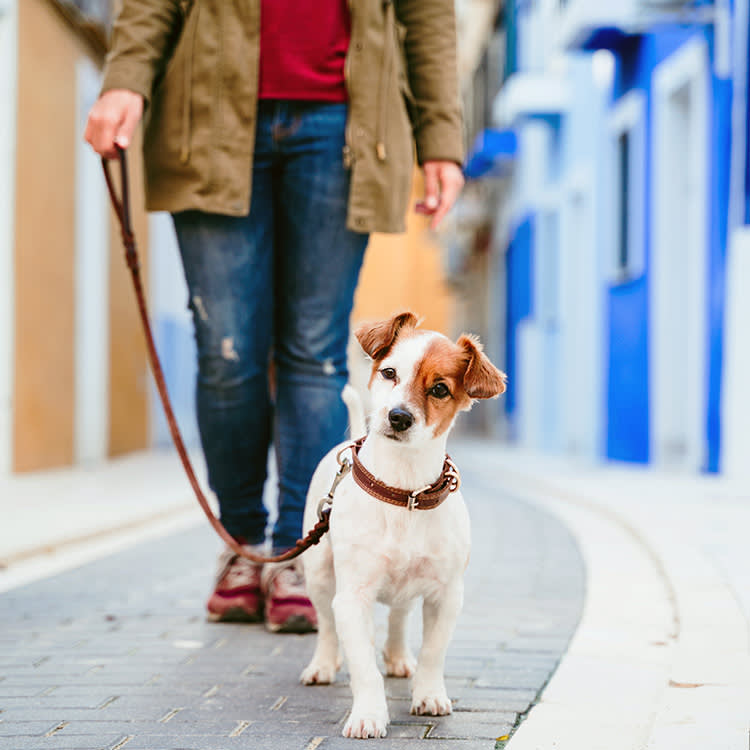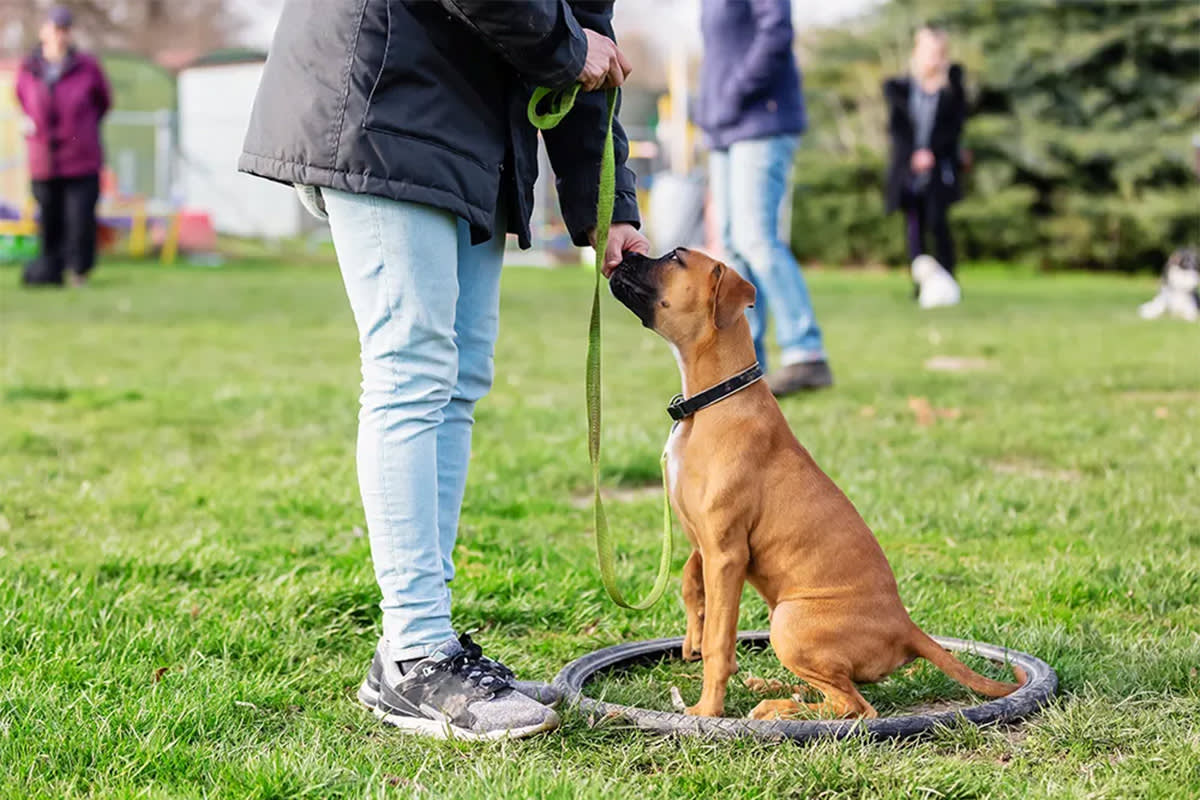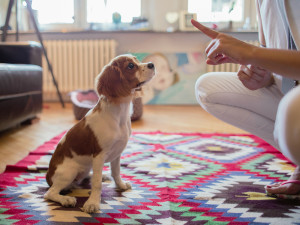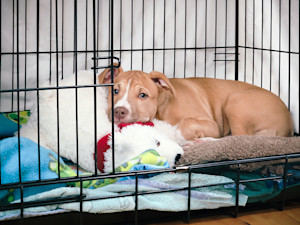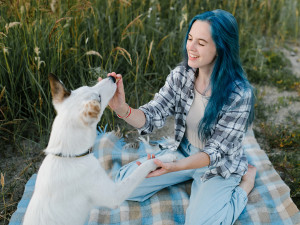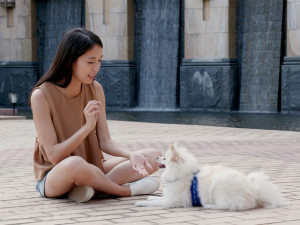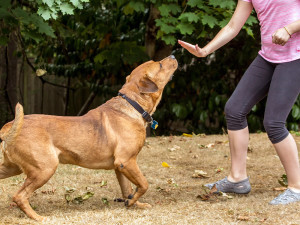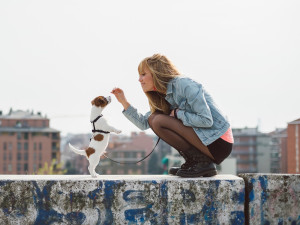5 Common Cues That Are Confusing to Dogs—And How to Get Them to Understand
Communicating with a pup is tricky, but it’s possible.
You say, “Sit” and your dog plops their booty down like a pro. You say, “Walk” and they lose their mind in the best way possible, oozing joy. You say, “Shake” and boom — paw in hand. Perfection.
So, why can’t all cues be that simple and work so well? Well, life is weird, and the gods of stress just don’t want our lives to be that easy. Communication is hard, and sometimes your dog has no clue what you’re saying, and honestly, it’s not their fault. Sometimes, we think we’re being clear, but from the dog’s POV, not so much.
Trick question: All dogs are perfect! But find out which type is the best fit for you.
Even the most common cues can be confusing to dogs, and that can lead to frustration all around. Luckily, we don’t have to live in this state of chaos. If we can understand why our dogs are confused, we can add clarity to their lives. Here are five common cues that tend to leave dogs confused — and how you stop the mixed signals.
“Stay”: We think “Stay” means to stay, so they should not move elsewhere. Seems pretty clear, so what’s the confusion about? Even if dogs get the idea that they are supposed to keep sitting (or lying down) where they are, the question is “Until when?” (Imagine if someone told you to freeze and never told you to unfreeze?) Until we aren’t looking? Until they get bored? Until a squirrel shows up?
How much do you spend on your pet per year?
Many people give their dogs the cue “Stay,” but don’t teach them when the Stay is over. Dogs need to know that this behavior has a beginning and an end. It’s a two-part behavior with a two-part cue. “Stay” is the part that tells them to stay put, and “Okay” is the part that tells them they’re free now. Without the second part, your dog ends up winging it, and let’s be real, they’ll get up when they feel like it, and you can’t even blame them.
“Come”: My translation of “Come” is to drop everything and sprint toward me like there is nothing they would ever rather do. A lot of dogs act like it’s optional, as in “Leave this stick? And the delicious smells in the grass? Or my best buddy? Nahhh.” Dogs aren’t naturally inclined to run away from something fun just because we say some word, however frantically or enthusiastically. Honestly, same. It’s not reasonable to expect them to want to do what we want them to do just because we want them.
It works better to call our dogs if we have taught them that “Come” means, “Whatever you have over there, I have something better over here.” And if that has been true many, many times during training (because when they do come, you have better-than-bacon treats, new toys, a chance to go for a car ride or a walk, or a bone) dogs will want to run over as fast as their legs can carry them. Dogs need to be confident it will be worth their while to respond, because then they will — every time. If instead you offer so-so treats, a few pats on the head, a bath, or you leash them up to leave the park, you could end up being ghosted.
“No”: When people say, “No” to their dog, they mean STOP. IMMEDIATELY. As obvious as this seems to us, dogs seem to think it means, “Uh-oh. You sound mad. Not sure why. Are you upset with me?” Truth is, “No” is super fuzzy. It’s all tone, no context. Your dog hears it, gets that the vibes are off, but doesn’t know what to do about it because they have no idea what you’re on about.
If you want your dog to understand that “No” means to stop what they are doing, you have to teach them this meaning specifically. Many trainers choose the word “Stop” for this purpose instead of saying “No,” but either works as long as you are consistent and reinforce them for stopping what they are doing when you say, “No.” Even a quick pause to look up at you counts.
“Drop it”: When you say it, you mean, “Release what you’ve got, you adorable thief.” Sadly, to the dog who just grabbed some treasure they’re not supposed to have, it might mean, “Game on, baby!” Your next action after saying, “Drop it” is to lunge for your dog. They bolt, because how else do they start the game of chase? The pillow or the passport or whatever they’ve got is now in peril.
You are stressed. Your dog? Not stressed at all. This is fun for them. Being chased is a game they love to play, and they know the play will start as soon as they have something in their mouth and you say, “Drop it.” The cue is working for them, but not for you. Oops, they’ve accidentally learned the wrong lesson — that “Drop it” means to run away with what they have in their mouths., They know they must run away or you will take it from them, so it’s motivating to elude your capture.
For clarity between you and your dog, train “Drop it” before you’re in a high-stakes stolen sock emergency. Start when your dog has a low-value toy, put a treat by their nose to encourage them to release the toy so they can take the treat. Offer them the toy again, and repeat a few times, then let them keep the toy. That way, you teach them they get something good when they release it and they end up with the toy in the end anyway.
Another part of the training is to trade up. Ask them to release something so-so such as a toy or a stick, and then give them a stuffed Kong or a new chew toy so they are oh-so-glad they dropped the original item. If you have to ask them to drop something they’re not supposed to have, give them something to replace it so it’s a win-win. That way, they won’t think “Drop it” means they’re about to get mugged.
“Heel”: You think it’s obvious that “Heel” means to walk next to you like the polite little angel you signed up for, but your dog is all kinds of mixed up about it. They’re more likely acting like they are thinking, “This walk is confusing. Can I sniff now? How about now? Why are we going so slowly? When can I be free?”
If you’re competing in formal obedience, your dog absolutely must be excellent at heeling as they will be judged — literally judged — on the precision of that skill. Otherwise, heeling as an essential canine skill feels to me a bit like a curtsy — only necessary for a few people (Are you headed to Buckingham Palace to meet the King anytime soon?) and not relevant in the modern world for the rest of us.
Most of us just don’t want walks that resemble dog-powered waterskiing. Our dogs need nice leash manners, but they can sniff, explore and enjoy the walk as long as they aren’t dragging us around and yanking our arms out of their sockets. The problem is, many people believe the way to get their dog to walk nicely without pulling and without wrapping us up in the leash with erratic, disorganized spinning, running, and leaping around is to teach them to heel.
This leads to confusion because of a lack of clear communication with our dogs about what we expect of them. Too many people switch between being okay with a loose leash and demanding a formal heel. Changing expectations on dogs is very confusing for them.
Unless you need a formal heel for some reason, stick with one set of expectations — walking with a loose leash so there’s no pulling — and the confusion between the two of you will be no more.
Bottom Line
They are no bad guys here—it’s not like our dogs are purposely failing to understand or we are purposely failing to be clear. We just have misunderstandings, as happens in any relationship. And maybe, just maybe, misunderstandings are more likely to happen when we are dealing with communications between different species.
Dogs are doing their best with the info we give them, which, truth be told, would benefit from more clarity. The good news? Once you identify the reasons for the miscommunication and teach your dog exactly what you mean, your dog will totally get it. Less confusion means happier dogs, happier people, and better relationships. Being dog-human bilingual makes all the difference!
